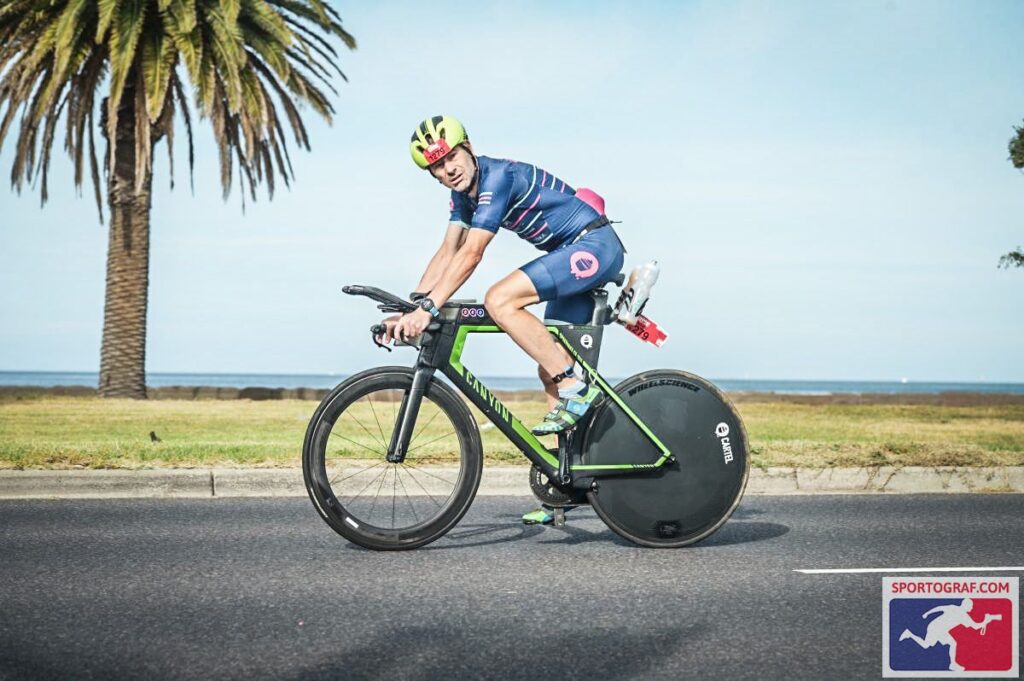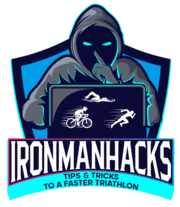If you’re just getting started in triathlon, you may want to refer to some of these resources.
We’ve compiled a series of topics based on common questions around getting started in triathlon, multisport, and Ironman races.
Intro To Triathlon
First things first. If you are a total newbie to this awesome sport, it may be worth watching this short video for a quick introduction to triathlon.
Triathlon Order: Swim, Bike, Run
Another first-timer question that is asked so much is about the order of the swim, bike, and run (hint: that’s the order). But check out the link below to see why they are in that order.
Triathlon Order – Many people wonder what the order of the three disciplines are – we explain it all here.
The Distances
Another big question is about the various distances of triathlon there are. There are four main triathlon distances. See the table below.
| Sprint | Olympic | Half | Full | |
| Swim | .8 km / .5 m | 1.5 km / .93 m | 1.9 km / 1.2 m | 3.8 km / 2.4 m |
| Bike | 20 km / 12.4 m | 40 km / 24.9 m | 90 km / 56 m | 180 km / 112 m |
| Run | 5 km / 3.1 m | 10 km / 6.2 m | 21.1 km / 13.1 m | 42.2 km / 26.2 m |
Half is in reference to “half Ironman” which is, as implied 50% of the full, or full Ironman.
Ironman is a brand name, and the biggest organizer of triathlon around the world, and so the name is commonly used with reference to these two distances.
If you ever see “70.3” or “140.6” those are in reference to the number of miles covered in the half or full. They are interchangeable terms with half and full.
There are other distances, too, such as double or triple or even longer (140.3 x 3, for example) and there are also shorter distances, but they are not very common.
The Swim
This is probably the most feared and least understood part of a triathlon, except for maybe nutrition. It’s often used as the excuse for good cyclists and runners for not wanting to do a triathlon.
But the thing is, plenty of triathletes have similar feelings about the swim – plenty are weakest here and just want to make it out of the water and onto the bike – where they know things will then be ok.
One of the challenges in the swim is knowing where you’re going – this is called sighting. But if you use these goggles you’ll never go the wrong way – check out the video.
Read more about building up your open-water confidence and becoming a better swimmer here.
Tip #57: Test your swim alignment in the pool
The Bike
If you don’t have a cycling background, you may be wondering how important a new bike is. And if you need one, do you need a triathlon bike, a time trial bike, or will a road bike do? Or can you just use any old bike?
Well, it depends. If you’re just out to do your first triathlon – and it’s a sprint or even Olympic distance – most would agree that it’s perfectly fine to simply use any bike you have access to, even if it’s a mountain bike or entry-level road bike.
Now is the time to test out how the sport and the event feels, not to break any records or win any prizes.

So riding on a basic bike is totally acceptable and will be enough to give you a sense of whether you want to continue in this sport. It wouldn’t make sense to invest too much money or learn how to get comfortable on a performance bike if cycling is new to you and you may not even enjoy it.
However, if you have done a few triathlons already and are ready to get serious, you may want to buy a more competitive bike. The first question you need to ask is what type of bike you’ll buy: A road bike or a triathlon bike?
Triathlon bike vs road bike – What are the differences and which should you buy?
The Run
This is the simplest of the three disciplines. All you need is some shoes and you’re set.
However, it may be the toughest since by the time you get through the swim and the bike, you’re fatigued. Are you really ready to run? Can your body handle the shock from the repetitive motion from cycling to the pounding of running?
If you haven’t done many brick runs (runs directly after riding) you may be in for a bit of a surprise when you start your run.
Also, even if you think you’re a strong runner, your times here may be slower than your standalone run times.
You may be capable of a 40 min 10k, but after the swim and the bike that could shoot up to a much slower time if you’re not conditioned properly.
Triathlon suit – What should you wear while you race and train?
Nutrition
Also referred to as the 4th discipline, nutrition is one of the trickiest things to get right.
But if you’re a beginner, I’d suggest not worrying too much about this as you are probably doing sprint or Olympic distances only – not full or half Ironman distances.
It’s really only at those longer distances when nutrition becomes a major and critical component.
However, there’s nothing wrong with learning a bit about it now. Here’s a good place to start.
Also, I have a triathlon nutrition calculator here.
Tri Books for Beginners
I have read many triathlon and training books around racing, nutrition, mindset, and much more.
Here is a list of them – browse the list to see if there’s anything you can use to get started.
How to Train for a Triathlon
Training for a triathlon can be a daunting task, but with the right approach and guidance, it can be an incredibly rewarding experience. Whether you’re a beginner or a seasoned athlete, there are always ways to improve your training and reach your goals.
The key to success is to develop a well-rounded training plan that incorporates and balances the swim, bike, run, and recovery.
When it comes to swim training, technique is everything. Focus on developing a strong and efficient stroke, and aim to swim at least two to three times per week. Incorporate interval training to build endurance and speed, and consider joining a local swim club or working with a coach to get personalized feedback and guidance.

Bike training should include both indoor and outdoor sessions, with a focus on building endurance and improving your power output. Aim to ride at least three to four times per week, and gradually increase your mileage as you get closer to your event. Consider investing in a heart rate monitor or power meter to help you track your progress and optimize your training.
Finally, run training should focus on building endurance and speed, while also incorporating some cross-training and strength work to help prevent injury. Aim to run at least three to four times per week, and gradually increase your mileage and intensity as you get closer to your event. Consider adding in some hill repeats, interval training, or tempo runs to challenge yourself and improve your performance.
In addition to these discipline-specific training tips, there are some general principles that can help you get the most out of your triathlon training. First, be sure to prioritize rest and recovery, as this is when your body repairs and adapts to the stress of training. Aim to get at least seven to eight hours of sleep per night, and consider incorporating some stretching, foam rolling, or massage to help your muscles recover.
Second, be sure to fuel your body with the right nutrients to support your training. This means eating a balanced diet that includes plenty of lean protein, complex carbohydrates, and healthy fats. Aim to eat a meal or snack that includes all three macronutrients within 30 minutes of finishing a workout to help your body recover and refuel.
Finally, don’t forget to have fun and enjoy the journey! Training for a triathlon can be challenging, but it’s also an incredible opportunity to push your limits and achieve your goals. Surround yourself with a supportive community of like-minded athletes, and remember to celebrate your progress and achievements along the way.
In conclusion, training for a triathlon requires a well-rounded approach that incorporates swim, bike, and run training, along with proper rest, recovery, and nutrition. By following these principles and seeking out expert advice and guidance, you can train smarter, not harder, and reach your goals with confidence and ease.
As a beginner, you may want to do the following to get started:
- Read more tips and tricks to a faster race
- Subscribe to our free weekly newsletter
- Subscribe to our YouTube channel and watch more videos on this awesome sport




